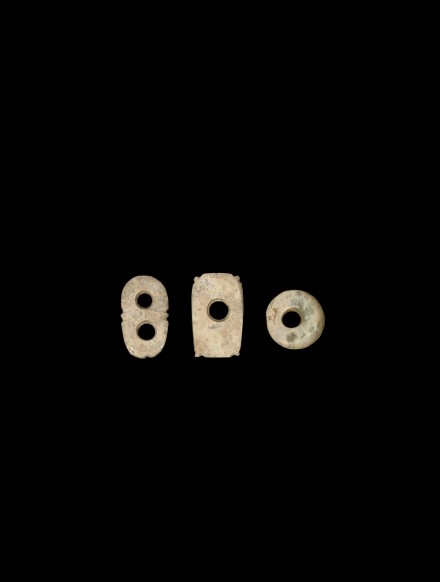J.J. Lally & Co., Oriental Art / New York City, New York
Menu
7.
THREE SMALL NEOLITHIC JADE ORNAMENTS
Dawenkou, Hongshan or other primitive culture, circa 4000 – 2000 B.C.
including a flat plaque of roughly rectangular form pierced with a central circular aperture and carved with tiny points at the corners; an oval plaque pierced with two apertures and with twin notches creating two small points at the edges of the median; and a ring of wedge shaped cross section, all carved from jade of mottled cloudy olive-tan color.
Lengths 15⁄16, 1, 9⁄16 inch (2.4, 2.5, 1.8 cm)
Compare the perforated ornament of closely related form unearthed from the Neolithic site at Fuzhuang village, Yanglou, Haozhou city, Anhui province, illustrated in Zhongguo yuqi quanji (Compendium of Chinese Jades), Vol. 1, Primitive Society, Shijiazhuang, 1992, no. 69, with description on p. 239. Another similar perforated ornament in the Kwan Collection is illustrated by Yang, Chinese Archaic Jades from the Kwan Collection, Hong Kong, 1994, no. 37, attributed to the Dawenkou culture or the primitive culture of Yangtze-Huaihe region, circa 4300-3000 B.C.
新石器時代 大汶口或紅山玉飾三件 各長 2.4, 2.5, 1.8 厘米
7.
THREE SMALL NEOLITHIC JADE ORNAMENTS
Dawenkou, Hongshan or other primitive culture, circa 4000 – 2000 B.C.
Lengths 15⁄16, 1, 9⁄16 inch (2.4, 2.5, 1.8 cm)